In the vast world of aquatic life, the Threadfin Rainbowfish (Iriatherina werneri) stands out as a captivating and unique species. With its striking appearance and fascinating behaviors, this fish has captured the hearts of aquarium enthusiasts worldwide. Let’s dive into the enchanting world of the Threadfin Rainbowfish and explore its scientific background, care requirements, and interesting facts.
Table of Contents
Scientifically known as Iriatherina werneri, the Threadfin Rainbowfish belongs to the Melanotaeniidae family, which is home to various rainbowfish species. This particular species is native to the freshwater habitats of Australia and New Guinea, where it thrives in slow-moving streams and wetlands.
One of the most remarkable aspects of the Threadfin Rainbowfish is its distinctive appearance. Males boast long, flowing fins that resemble delicate threads, hence the name “Threadfin.” These fins are adorned with vibrant colors, ranging from iridescent blues and greens to fiery reds and oranges. Females, while less flamboyant, still possess an elegant beauty with their silvery bodies and subtler fin colors.
In the aquarium trade, Threadfin Rainbowfish are sometimes referred to as “Featherfin Rainbowfish” or “Werner’s Rainbowfish,” paying homage to its scientific name. These alternative names only add to the allure and mystique surrounding this incredible species.
When it comes to caring for Threadfin Rainbowfish, it’s essential to understand their preferred habitat and behavior. These fish are generally peaceful and make excellent additions to community tanks. They are mid-level dwellers, meaning they occupy the middle portion of the aquarium, gracefully swimming and interacting with their tank mates.
To create an ideal environment for Threadfin Rainbowfish, aquarists should aim for a well-planted tank with plenty of open swimming space. These fish thrive in slightly acidic to neutral water conditions, with a temperature range of 75-82°F (24-28°C). A diet consisting of high-quality flakes, frozen, and live foods will keep them healthy and vibrant.
Interestingly, Threadfin Rainbowfish have a unique breeding behavior. Males will display their impressive fins and engage in a mesmerizing courtship dance to attract females. Once a pair has formed, the female will lay her eggs among fine-leaved plants, where the male will then fertilize them. Witnessing this natural spectacle is a true delight for any aquarium enthusiast.
Throughout history, the Threadfin Rainbowfish has captured the attention of both scientists and hobbyists alike. First described by Weber in 1895, this species has been the subject of numerous studies and observations. Its popularity in the aquarium trade has grown steadily over the years, with many hobbyists seeking to create stunning displays showcasing these remarkable fish.
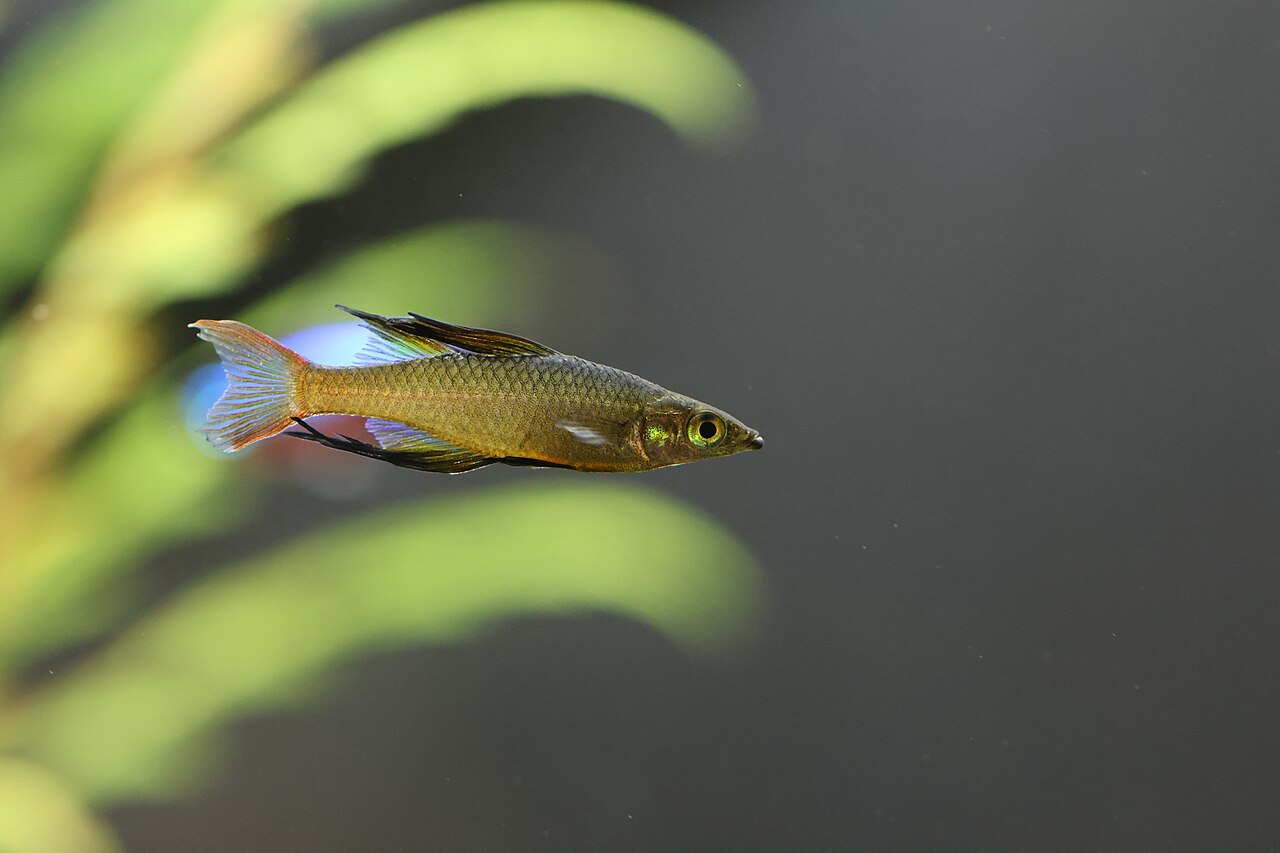
Key Information
Threadfin Rainbowfish (Iriatherina werneri) are known for their stunning and vibrant colors. Males display an array of iridescent hues, ranging from electric blue and emerald green to fiery red and orange, particularly in their elongated fins. These colors intensify during breeding displays, creating a mesmerizing spectacle in the aquarium. Females, while less flamboyant, still possess an elegant charm with their silvery bodies and subtler fin colors.
| Family | Melanotaeniidae |
| Price | $5 to $15 per fish |
| Common Names | Threadfin Rainbowfish, Featherfin Rainbowfish, Werner’s Rainbowfish |
| Variants | None |
| Ideal Tank Size | Minimum 20 gallons (75 liters) |
| Water Parameters | Temperature: 75-82°F (24-28°C), pH: 6.5-7.5, Hardness: 5-15 dGH |
| Lifespan | 3-5 years |
| Full Size | 1.5-2 inches (4-5 cm) |
| Natural Environment | Slow-moving streams and wetlands in Australia and New Guinea |
| Behavior | Peaceful, active, schooling fish |
| Habitat Preference | Mid-level dwellers, prefer well-planted tanks with open swimming areas |
| Aquarium Decoration | Dense vegetation, floating plants, driftwood, and rocky structures |
| Ideal Tank Mates | Other peaceful, similarly-sized fish such as tetras, rasboras, and small catfish |
| Fish to Avoid | Large, aggressive fish that may view Threadfin Rainbowfish as prey |
| Best Foods/Diet | High-quality flakes, frozen foods (e.g., bloodworms, brine shrimp), and live foods (e.g., daphnia, mosquito larvae) |
| Disease | Susceptible to common freshwater diseases if water quality is poor; maintain proper hygiene and quarantine new fish |
| Sex-Switch | No, Threadfin Rainbowfish do not change sex |
| Gender Differences | Males have larger, more colorful fins compared to females; females are slightly smaller and less vibrant |
| Care Level | Easy to moderate; suitable for beginner to intermediate aquarists |
| Breeding Level | Moderate; provide fine-leaved plants for spawning and remove adults after breeding to prevent them from eating the eggs; fry can be fed infusoria, baby brine shrimp, or powdered fry food |
Ideal Tank Mates
When selecting ideal tank mates for Threadfin Rainbowfish (Iriatherina werneri), it’s essential to consider compatibility in terms of temperament, size, and environmental requirements. Threadfin Rainbowfish are peaceful, active, and relatively small, making them suitable for a community tank with similarly-sized, non-aggressive species.
Ideal tank mates should not only coexist harmoniously with Threadfin Rainbowfish but also contribute to creating a visually appealing and balanced aquarium. By choosing fish that occupy different levels of the tank and have complementary colors and behaviors, you can establish a thriving and captivating aquatic environment.
Here are 15 ideal tank mates for Threadfin Rainbowfish, along with a brief explanation of why they are compatible:
1. Neon Tetras (Paracheirodon innesi)
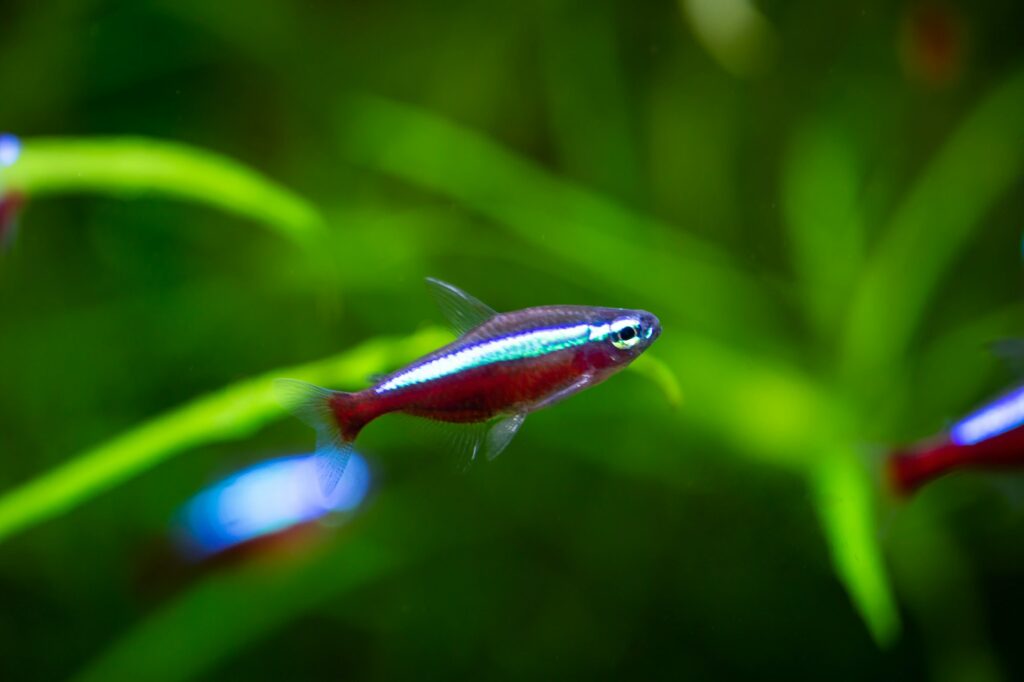
Neon Tetras are small, peaceful, and colorful fish that make excellent companions for Threadfin Rainbowfish. Their iridescent blue and red stripes complement the vibrant colors of the rainbowfish, creating a visually stunning display.
2. Harlequin Rasboras (Trigonostigma heteromorpha)
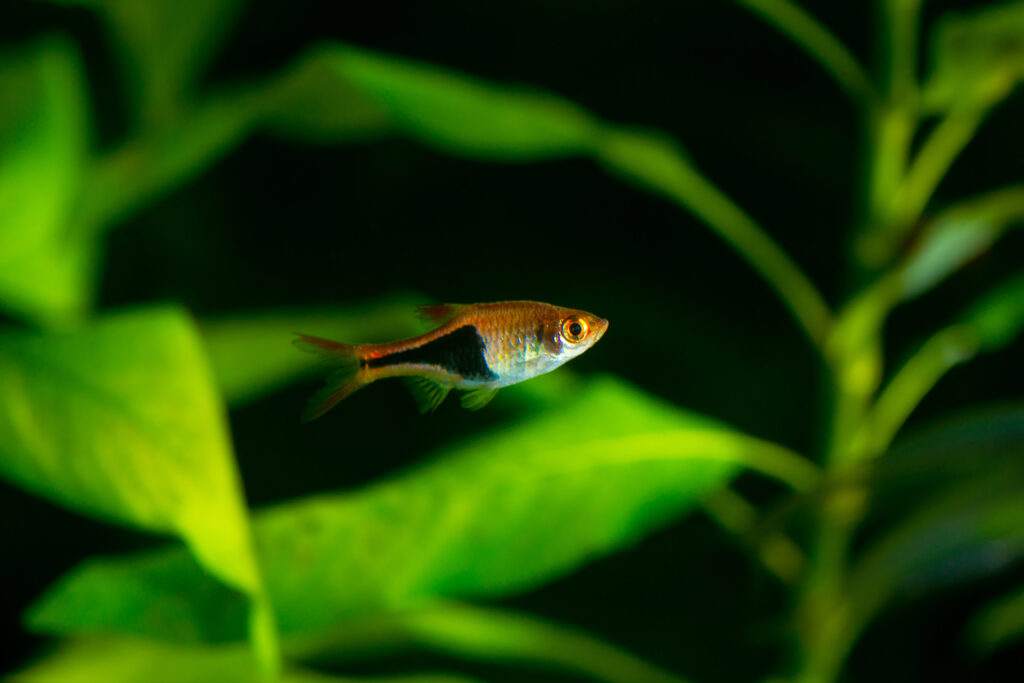
Harlequin Rasboras are another peaceful schooling fish that can coexist well with Threadfin Rainbowfish. Their striking red and black coloration adds visual interest to the tank, and their active swimming behavior complements the rainbowfish’s movements.
3. Pygmy Corydoras (Corydoras pygmaeus)
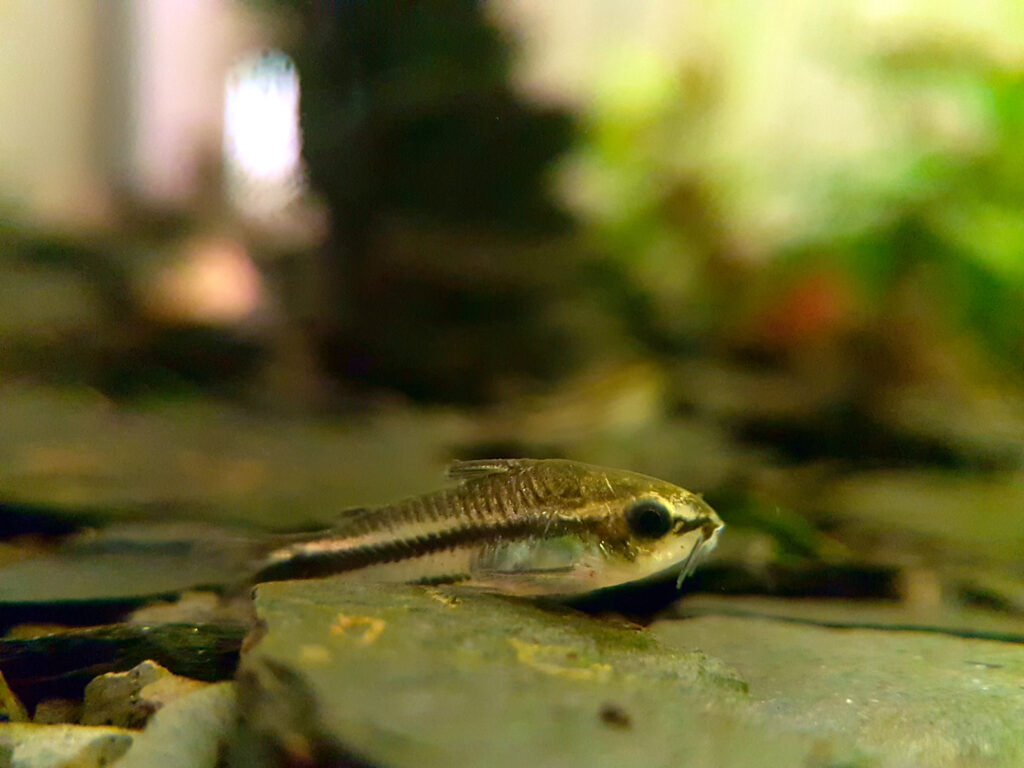
Pygmy Corydoras are tiny, peaceful catfish that occupy the bottom level of the tank, making them an ideal addition to a Threadfin Rainbowfish community. They help keep the substrate clean and add a unique dimension to the aquarium.
4. Cherry Barbs (Puntius titteya)
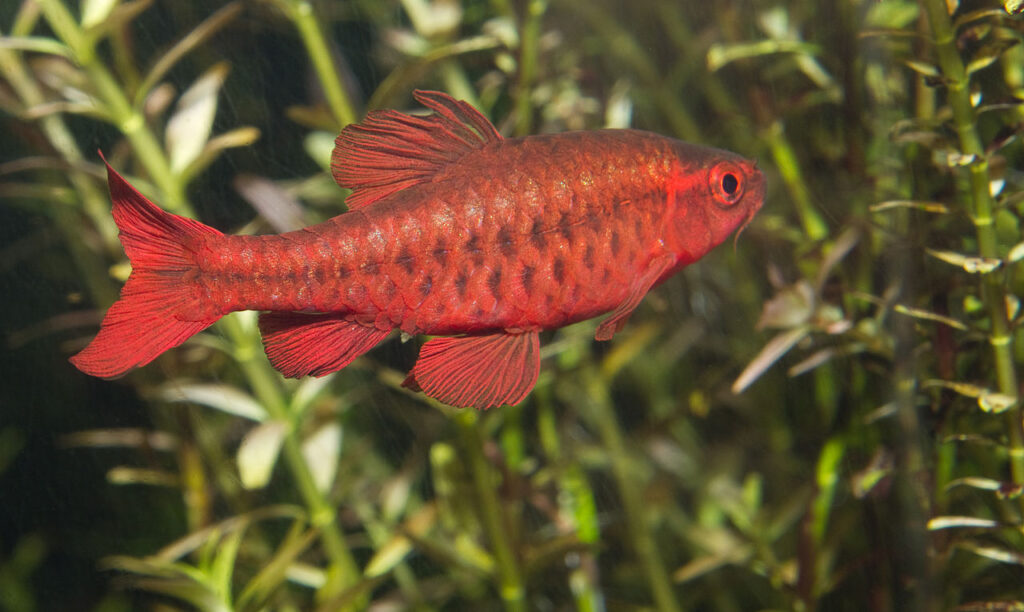
Cherry Barbs are small, colorful fish that can thrive alongside Threadfin Rainbowfish. Males display a vibrant red coloration, while females have a more subdued appearance. They are active swimmers and can help create a lively atmosphere in the tank.
5. Ember Tetras (Hyphessobrycon amandae)
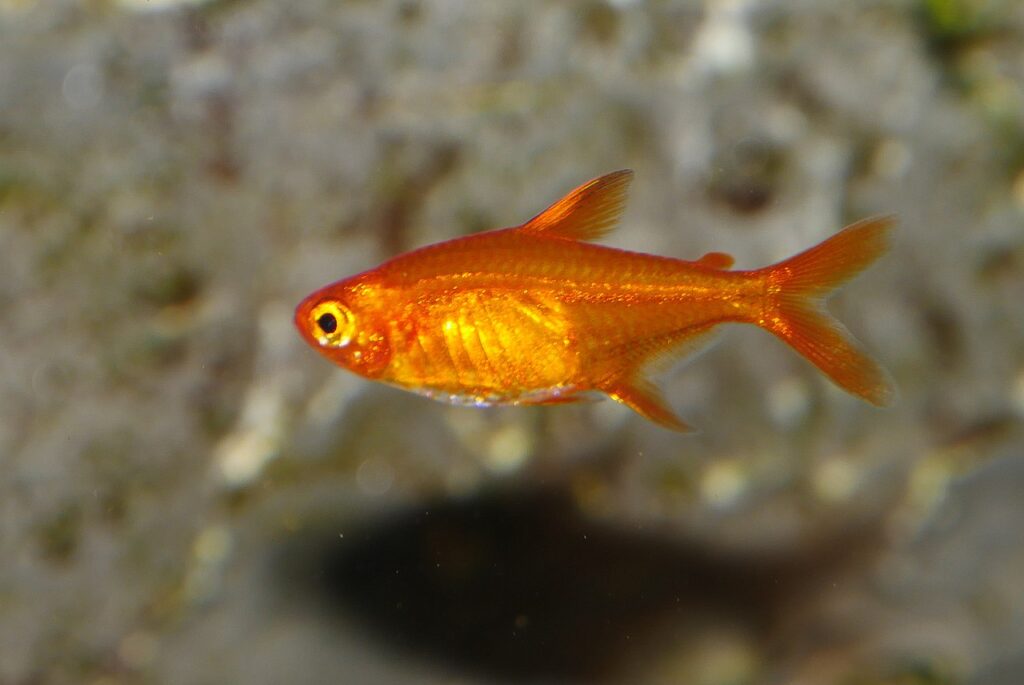
Ember Tetras are tiny, peaceful fish with a striking orange-red coloration. Their small size and calm demeanor make them an excellent choice for a Threadfin Rainbowfish community tank, as they will not compete for space or resources.
6. Kuhli Loaches (Pangio kuhlii)
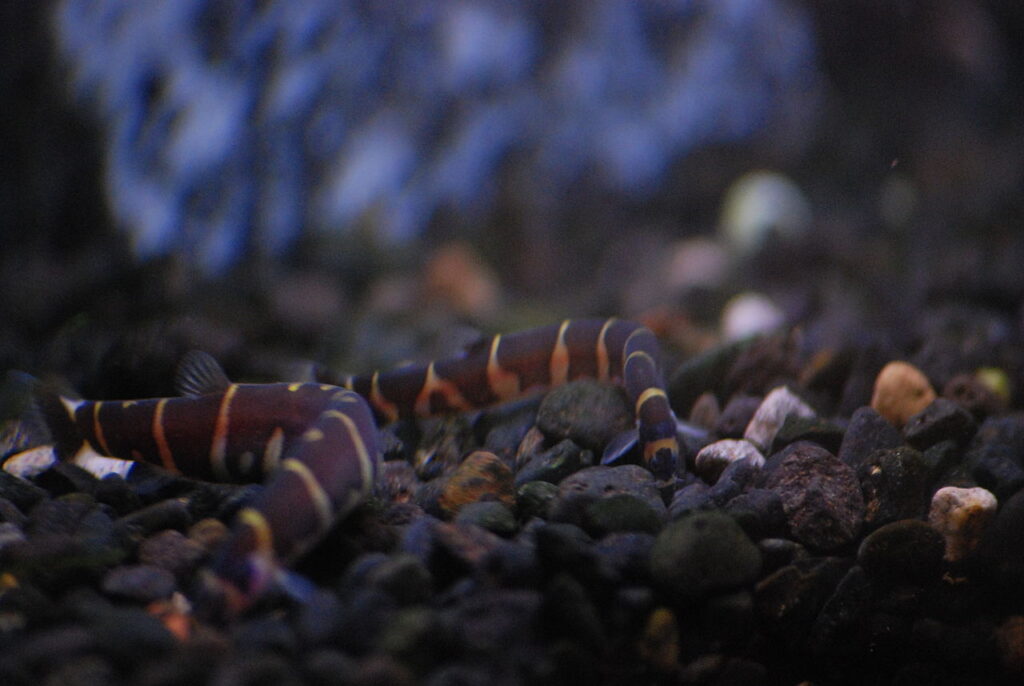
Kuhli Loaches are eel-like fish that provide a unique and interesting addition to a Threadfin Rainbowfish tank. They are peaceful bottom-dwellers that help keep the substrate clean and add a sense of mystery to the aquarium with their unusual appearance.
7. Otocinclus Catfish (Otocinclus spp.)
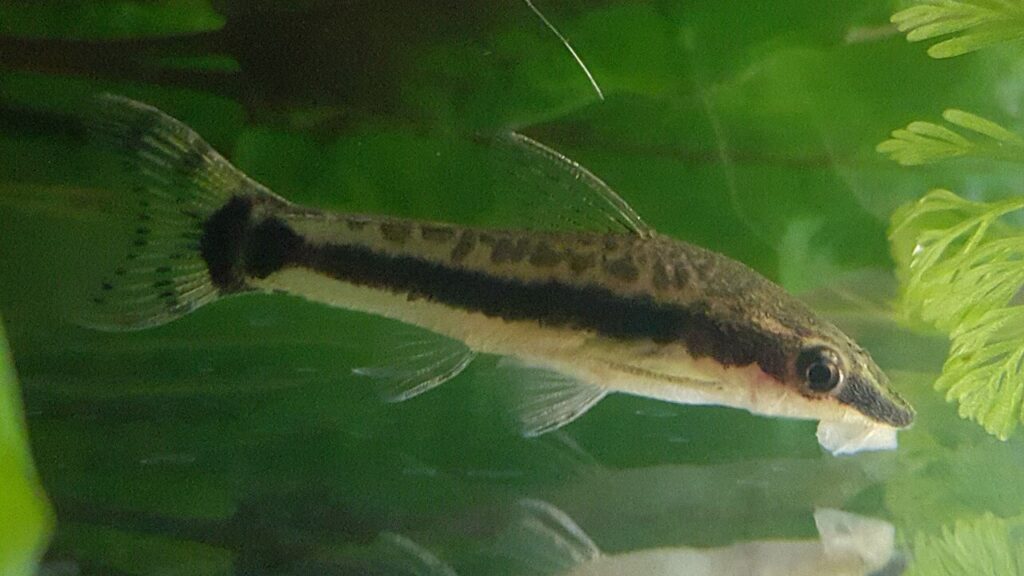
Otocinclus Catfish are small, algae-eating fish that are both peaceful and beneficial to the aquarium. They help control algae growth on plants and surfaces, maintaining a clean and healthy environment for Threadfin Rainbowfish.
8. Celestial Pearl Danios (Danio margaritatus)
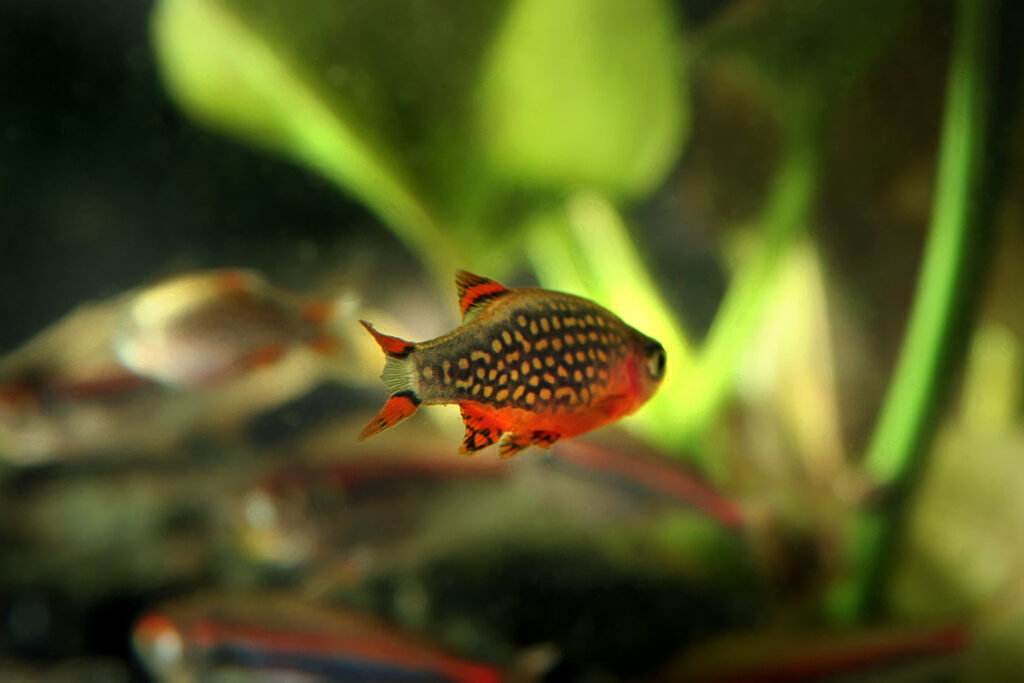
Celestial Pearl Danios, also known as Galaxy Rasboras, are small, peaceful fish with a stunning spotted pattern on their bodies. They are active swimmers and can add visual interest to a Threadfin Rainbowfish tank without causing any disruption.
9. Endler’s Livebearers (Poecilia wingei)
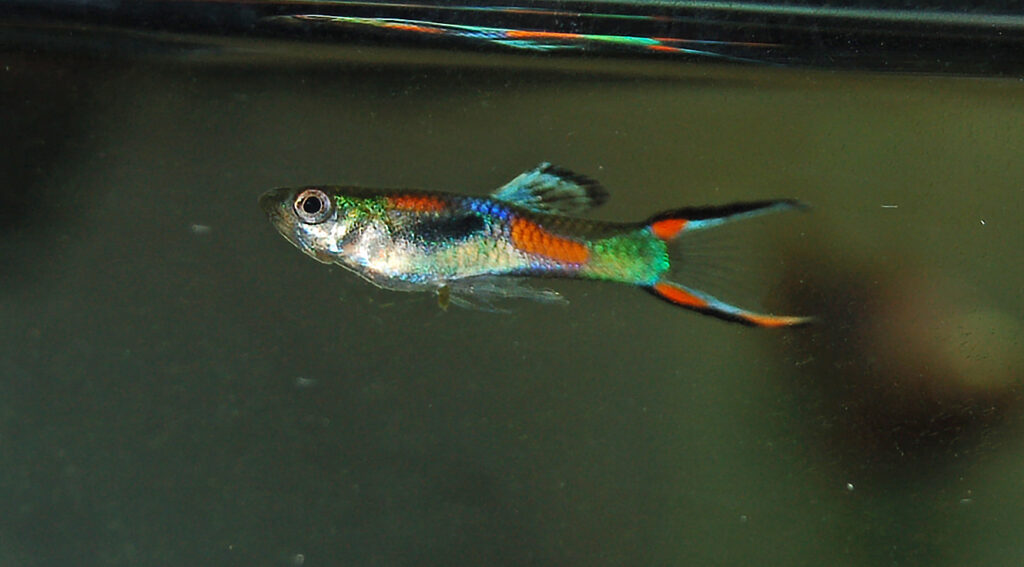
Endler’s Livebearers are small, colorful fish that are well-suited for a Threadfin Rainbowfish community. Males display an array of vibrant colors and patterns, while females are less flamboyant. They occupy the upper levels of the tank and can add a lively presence to the aquarium.
10. Dwarf Gouramis (Trichogaster lalius)
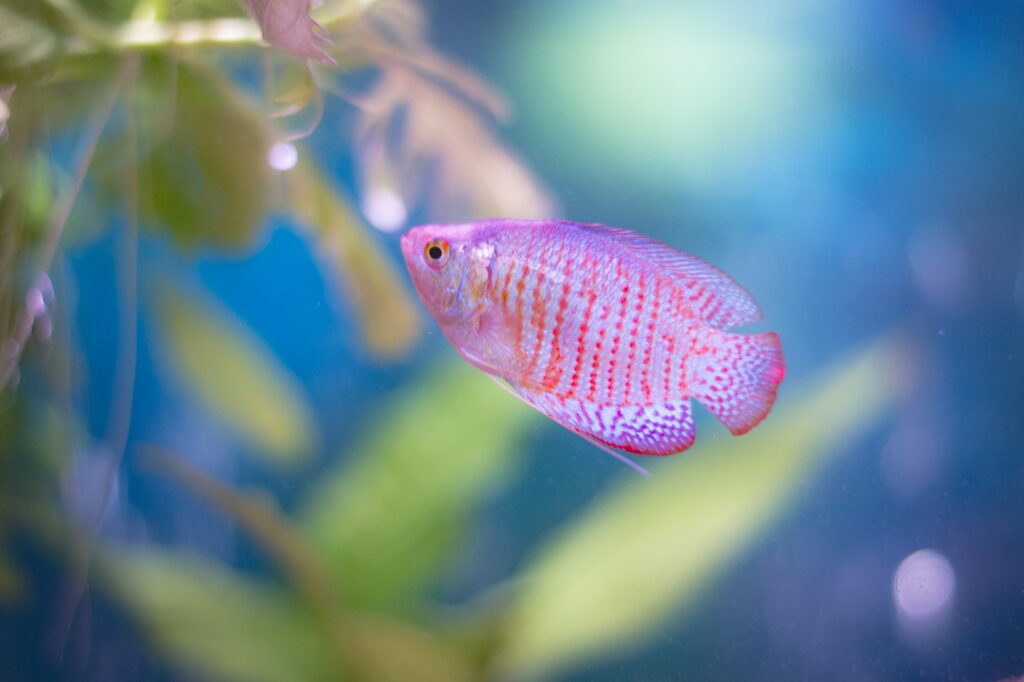
Dwarf Gouramis are peaceful, colorful fish that can make good tank mates for Threadfin Rainbowfish. They occupy the upper levels of the tank and have a unique labyrinth organ that allows them to breathe air from the surface. Their gentle nature and vibrant colors make them an attractive addition to the community.
11. Cardinal Tetras (Paracheirodon axelrodi)
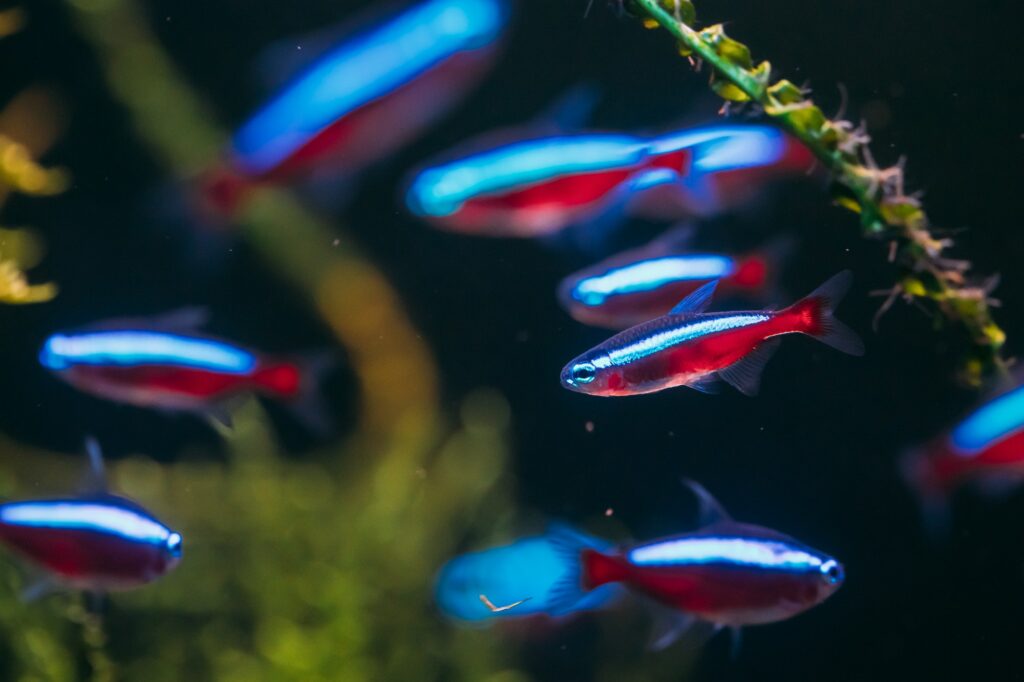
Cardinal Tetras are visually stunning fish with a horizontal blue stripe flanked by red coloration. They are peaceful schooling fish that can coexist harmoniously with Threadfin Rainbowfish, adding a splash of color and activity to the mid-level of the tank.
12. Pygmy Hatchetfish (Carnegiella myersi)
Pygmy Hatchetfish are small, unique fish that occupy the top level of the tank. They have a distinct hatchet-shaped body and are known for their ability to jump out of the water to catch prey. In a well-covered tank, they can make interesting and peaceful companions for Threadfin Rainbowfish.
13. Rummy Nose Tetras (Hemigrammus bleheri)
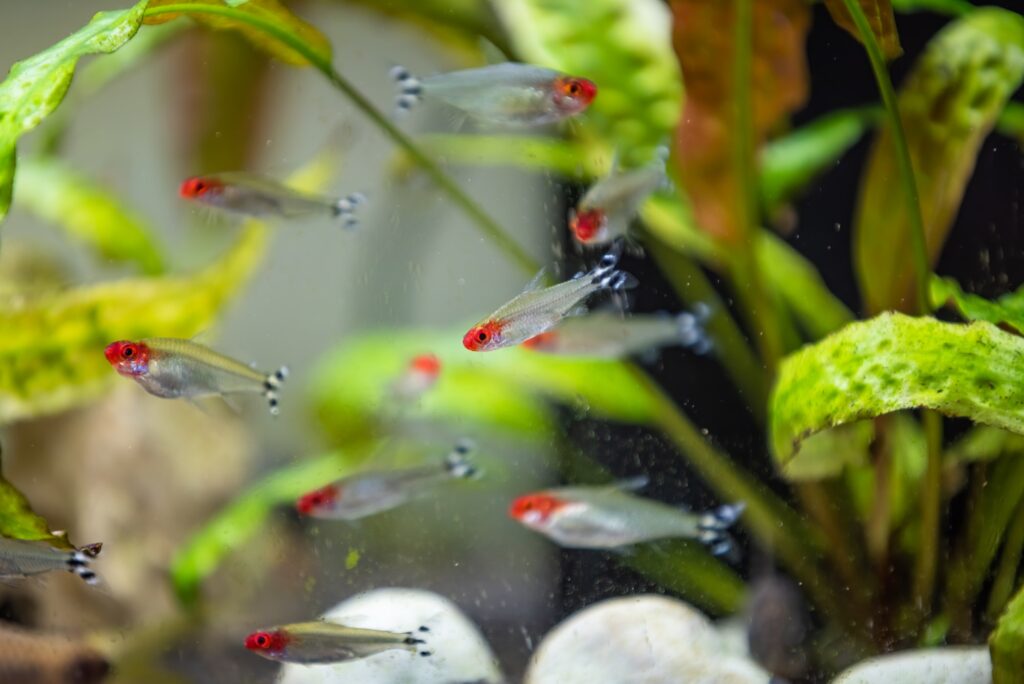
Rummy Nose Tetras are peaceful schooling fish known for their distinctive red-colored noses. They are active swimmers that can add visual interest and movement to a Threadfin Rainbowfish tank, while their peaceful nature ensures a harmonious community.
14. Scissor-Tail Rasboras (Rasbora trilineata)
Scissor-Tail Rasboras are elegant fish with a slender, elongated body and a deeply forked caudal fin. They are peaceful and active swimmers that can create a striking visual display in a Threadfin Rainbowfish tank, particularly when kept in schools.
15. Cherry Shrimp (Neocaridina davidi)
Cherry Shrimp are small, peaceful invertebrates that can add a unique dimension to a Threadfin Rainbowfish tank. They are efficient scavengers that help keep the substrate clean and provide a fascinating visual element with their bright red coloration. As long as the rainbowfish are well-fed, they will not typically prey on adult Cherry Shrimp.
FAQs
How many Threadfin Rainbowfish should I keep together?
It’s recommended to keep Threadfin Rainbowfish in groups of at least six individuals. These fish are schooling species and feel more secure and display their natural behaviors when kept in a group. Keeping them in larger numbers can also help disperse any potential aggression among males.
Are Threadfin Rainbowfish jumpers?
Yes, Threadfin Rainbowfish are known to be jumpers, especially when startled or in a tank with an open top. To prevent them from jumping out of the aquarium, make sure to use a tight-fitting lid or keep the water level at least a few inches below the top of the tank.
How often should I feed my Threadfin Rainbowfish?
Threadfin Rainbowfish should be fed small amounts of food two to three times a day. Offer them a variety of high-quality flake foods, frozen foods like brine shrimp and bloodworms, and live foods such as daphnia and mosquito larvae. Avoid overfeeding, as this can lead to poor water quality and health issues.
Can Threadfin Rainbowfish be kept with shrimp?
Yes, Threadfin Rainbowfish can be kept with larger shrimp species like Cherry Shrimp or Amano Shrimp. However, keep in mind that very small shrimp, such as newly hatched shrimplets, may be viewed as food by the rainbowfish. Providing plenty of hiding spots and vegetation can help protect the shrimp population.
How can I tell the difference between male and female Threadfin Rainbowfish?
Male Threadfin Rainbowfish are generally more colorful than females, particularly when they are in breeding condition. Males have longer, more ornate fins, especially the threadlike extensions on their dorsal and anal fins. Females are typically slightly smaller and have a more subdued appearance.
Do Threadfin Rainbowfish need a planted tank?
While Threadfin Rainbowfish can be kept in a non-planted tank, providing them with a well-planted aquarium is beneficial. Plants offer hiding spots, help maintain good water quality, and create a more natural environment for the fish. Java fern, Java moss, and Anubias are excellent plant choices for a Threadfin Rainbowfish tank.
How long do Threadfin Rainbowfish live?
With proper care and a well-maintained aquarium, Threadfin Rainbowfish can live for 3-5 years. Factors such as water quality, diet, and tank conditions all play a role in their longevity. Regular water changes, a varied diet, and a stress-free environment can help ensure your Threadfin Rainbowfish live a long and healthy life.
Can I keep Threadfin Rainbowfish with other rainbowfish species?
Yes, Threadfin Rainbowfish can be kept with other peaceful rainbowfish species that have similar size and care requirements. Some compatible rainbowfish include Celebes Rainbowfish (Marosatherina ladigesi), Dwarf Neon Rainbowfish (Melanotaenia praecox), and Pygmy Rainbowfish (Melanotaenia pygmaea). When keeping different rainbowfish species together, provide ample swimming space and hiding spots to minimize any potential territorial disputes.
Leave a Reply